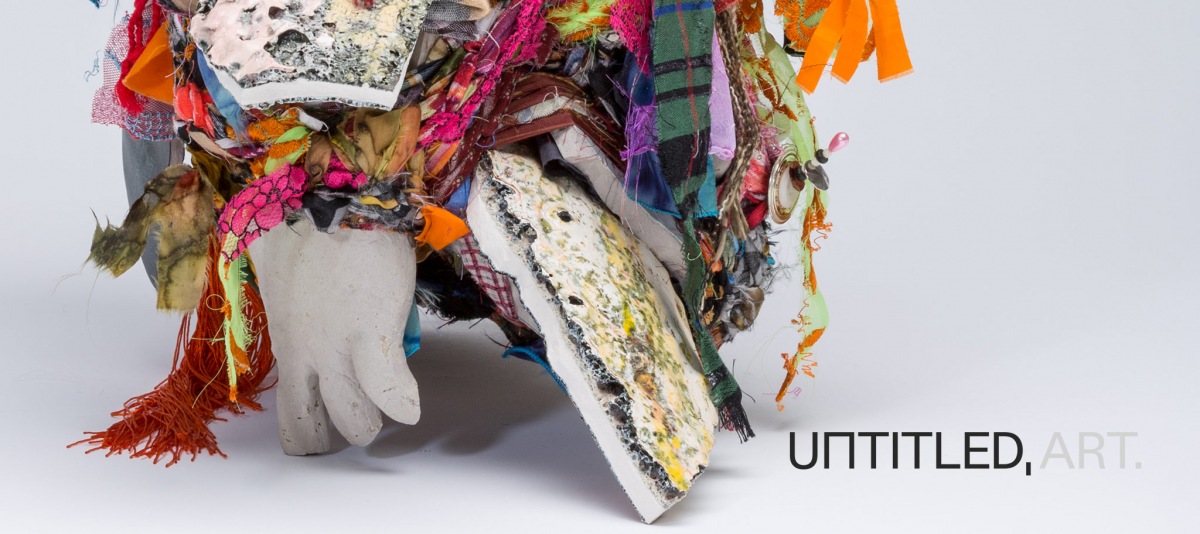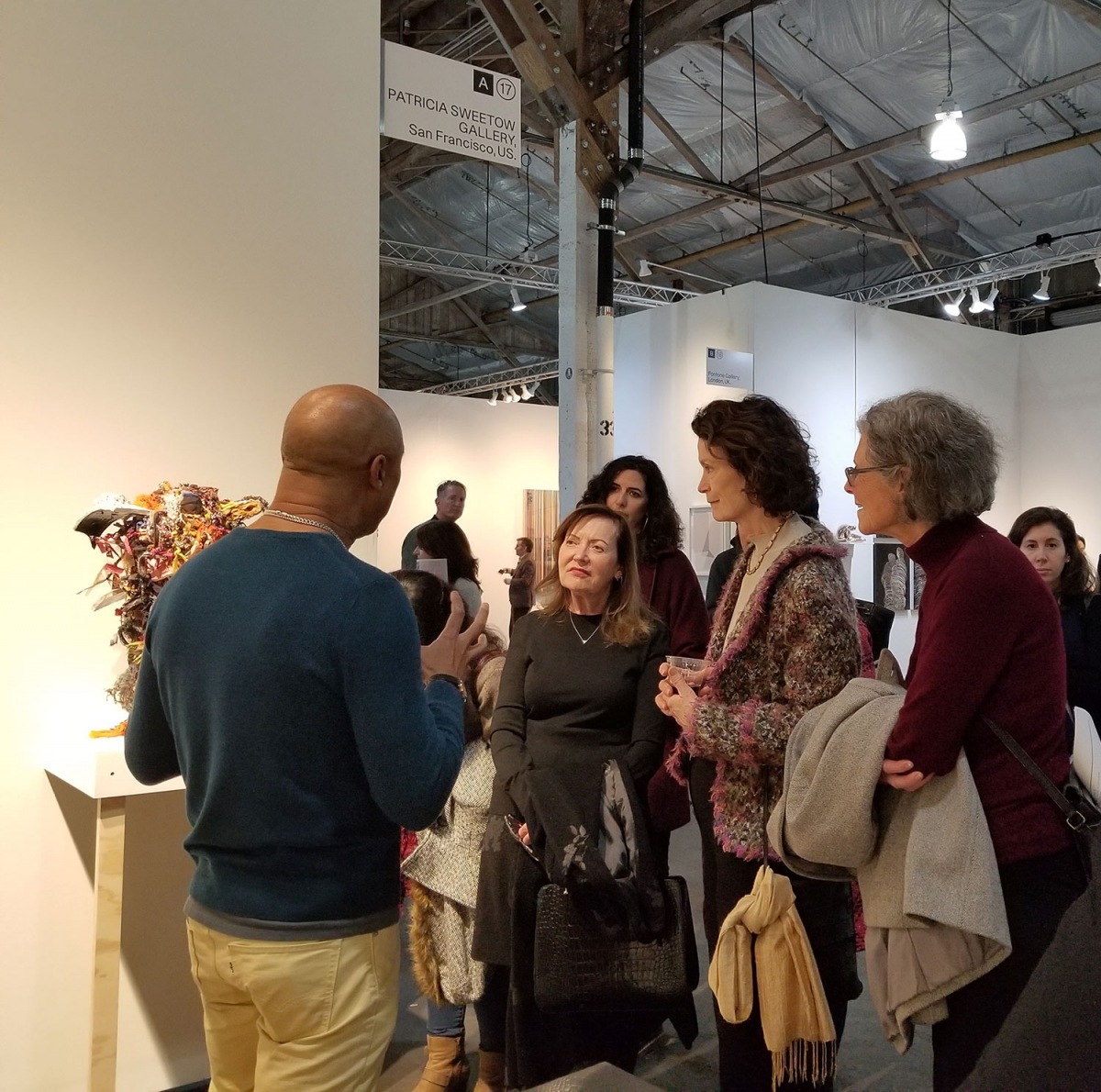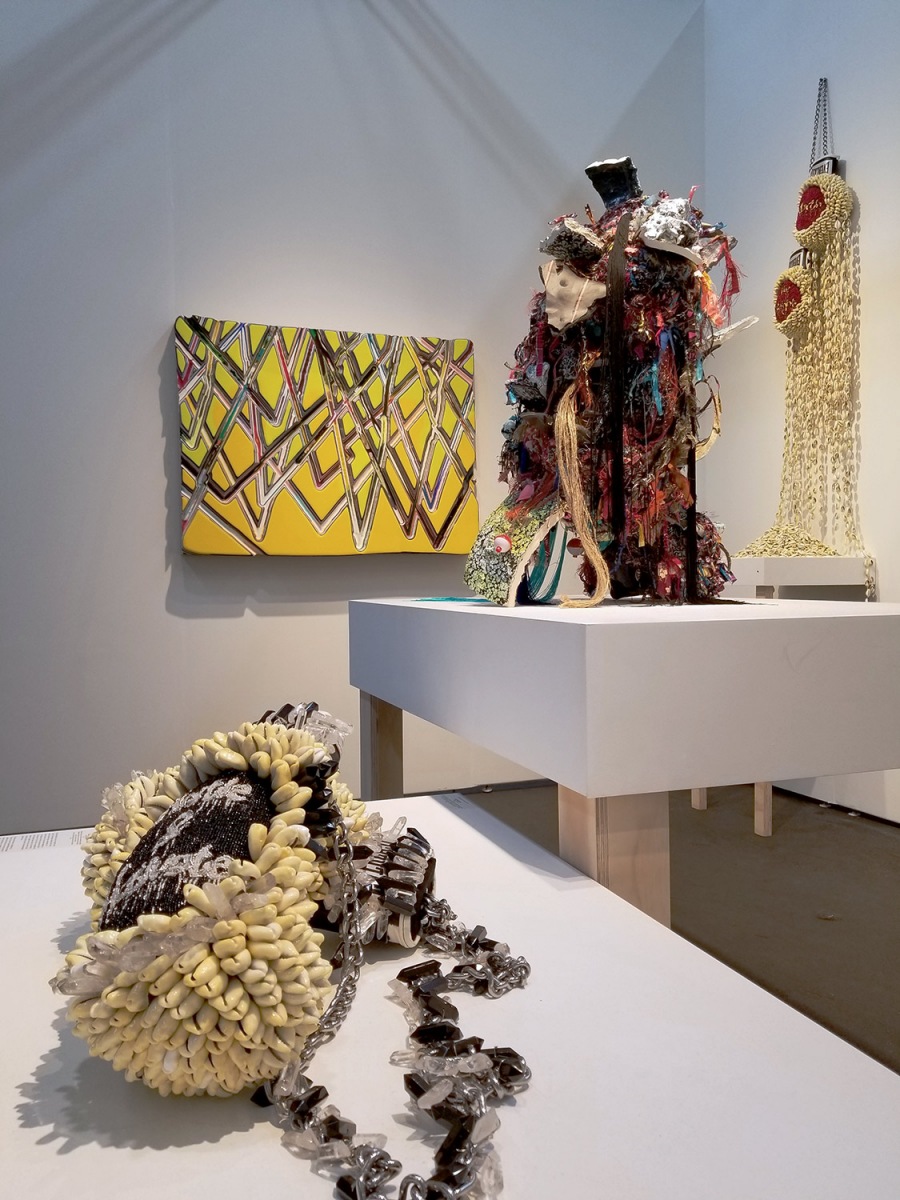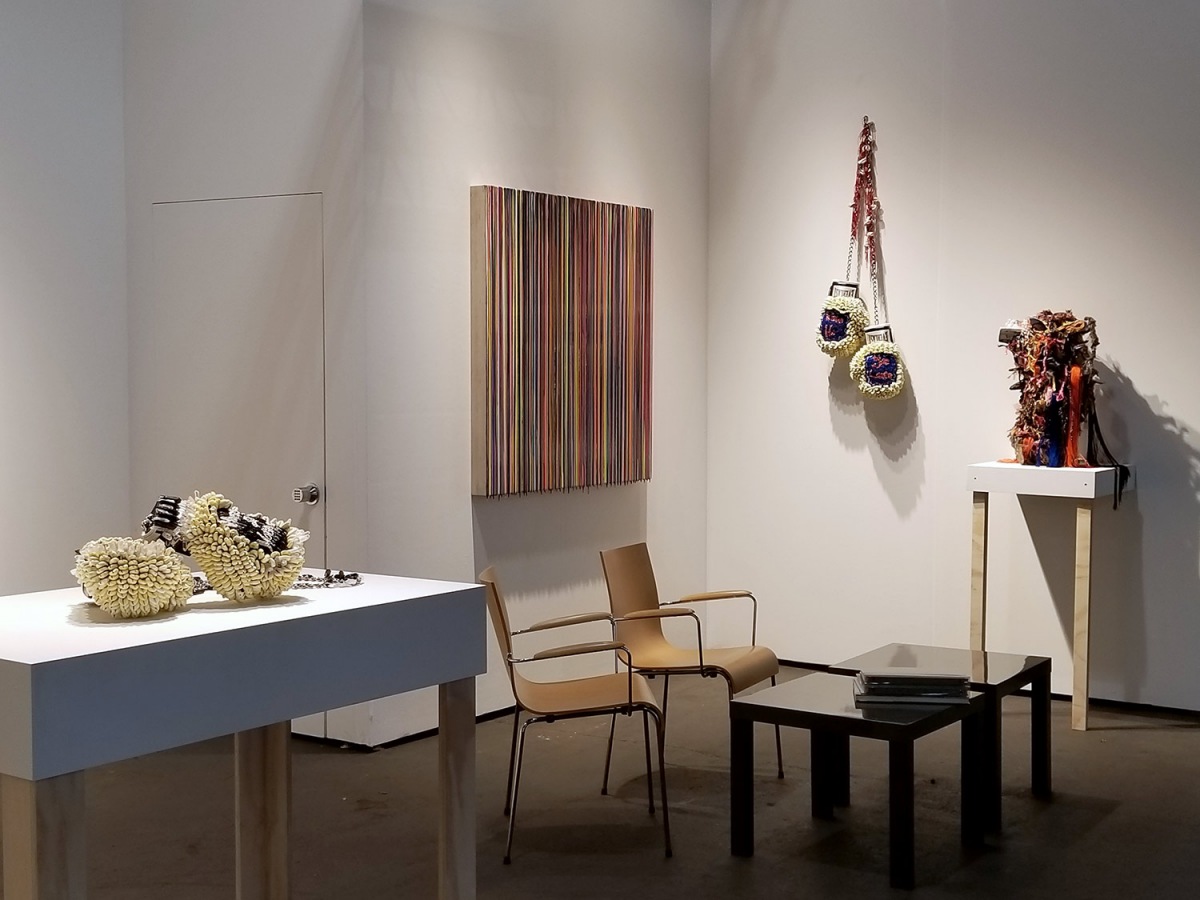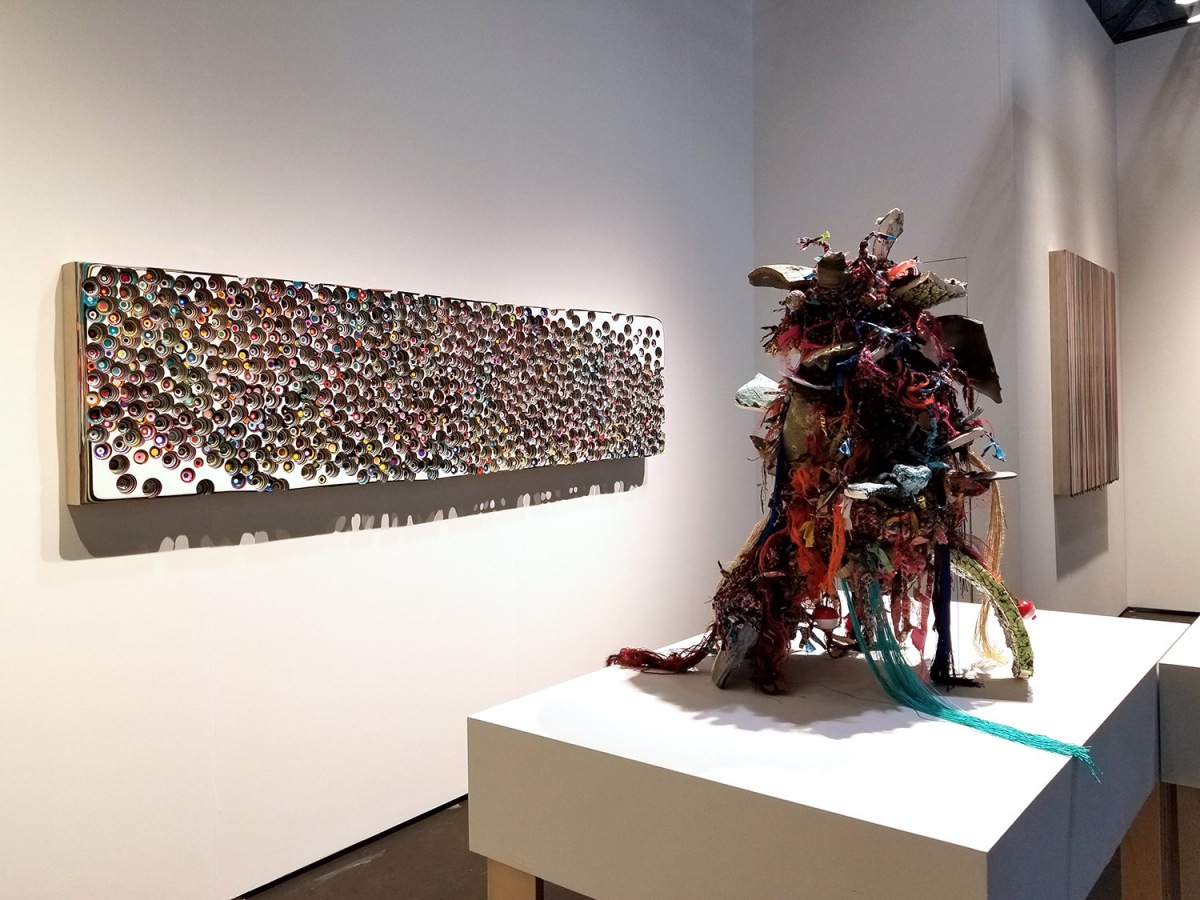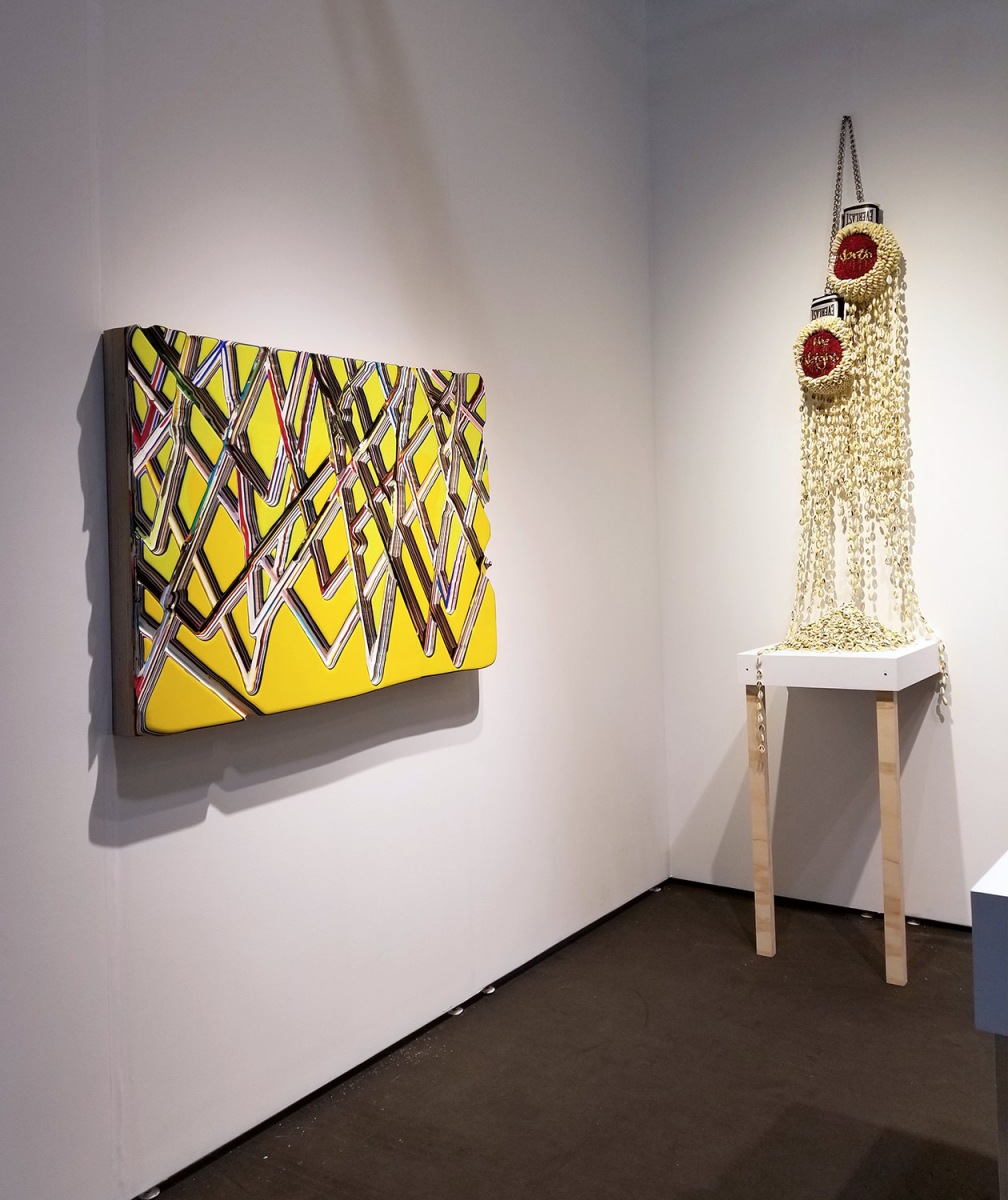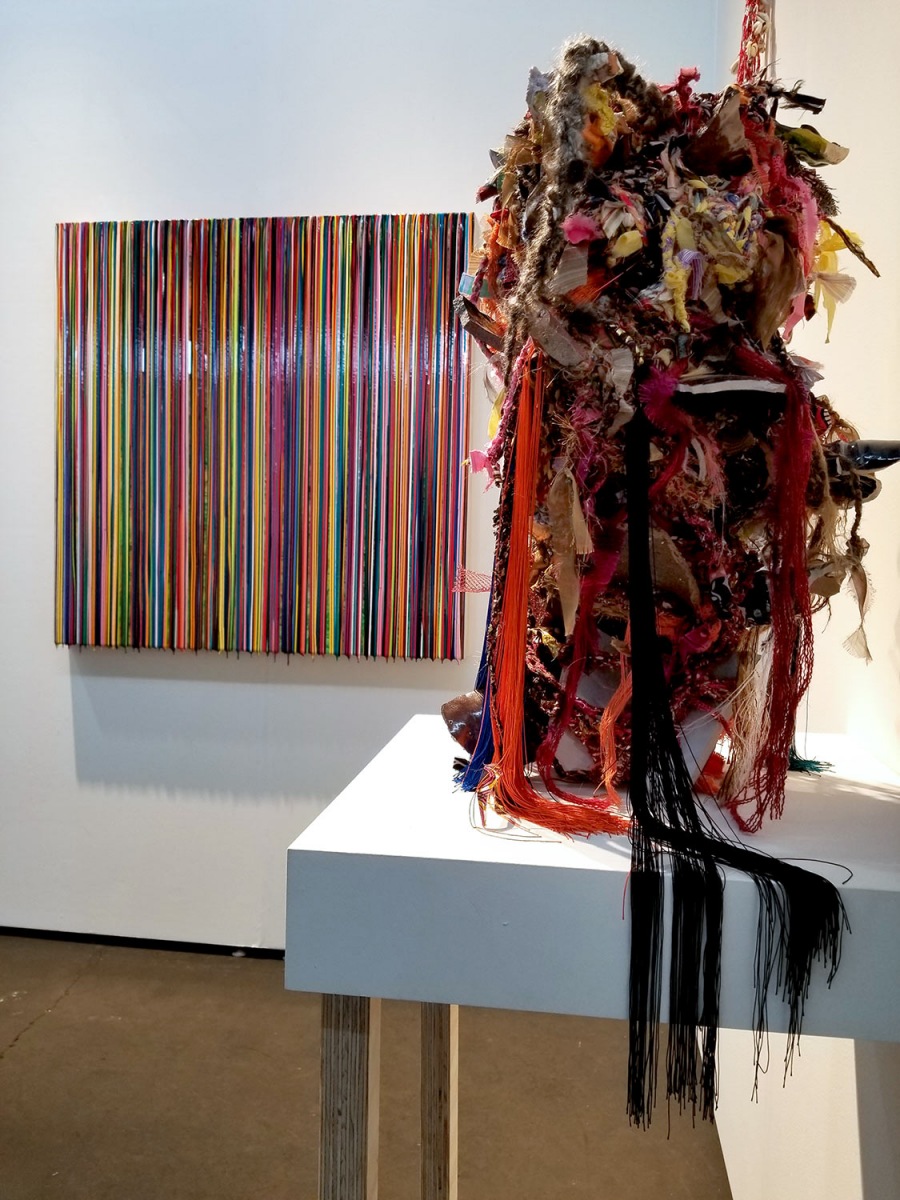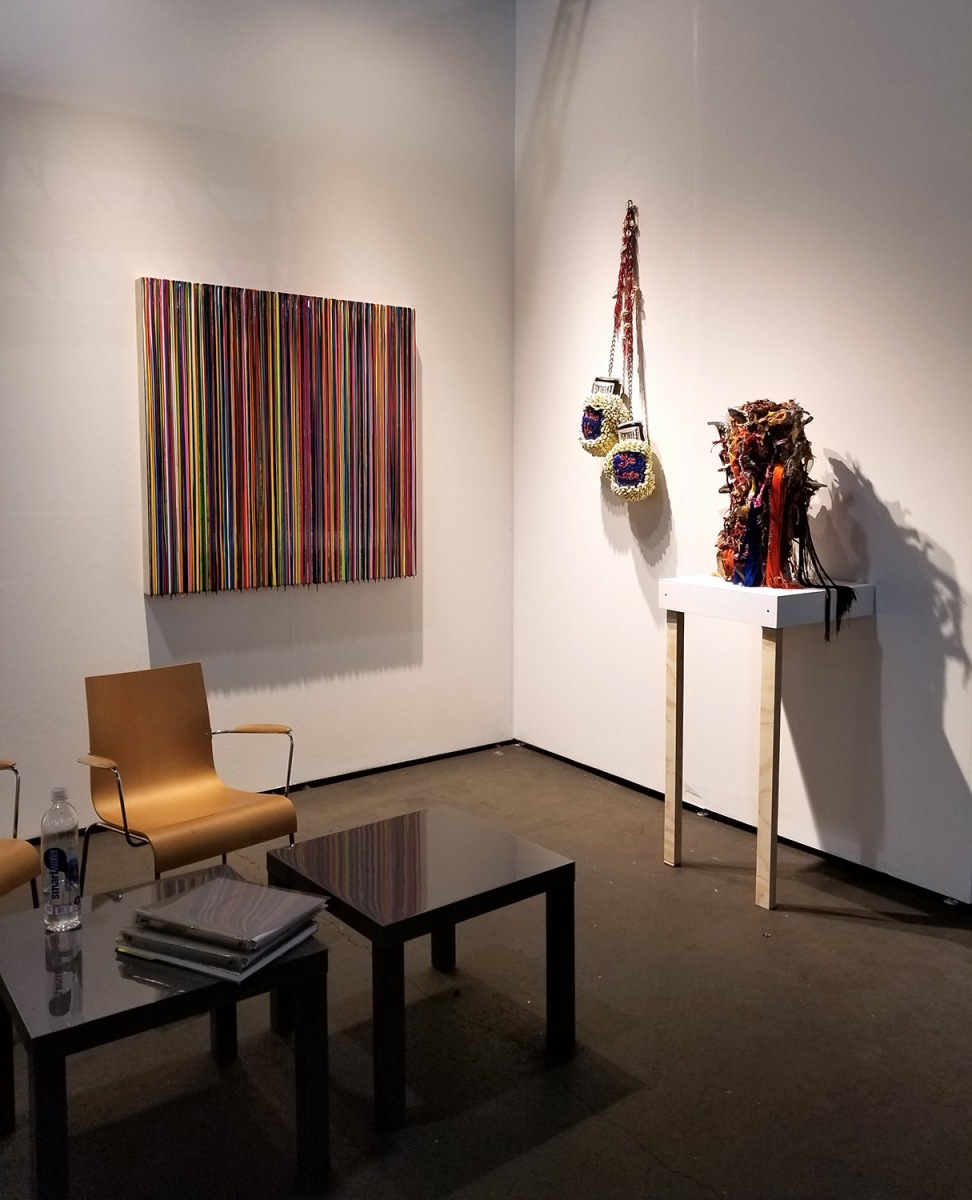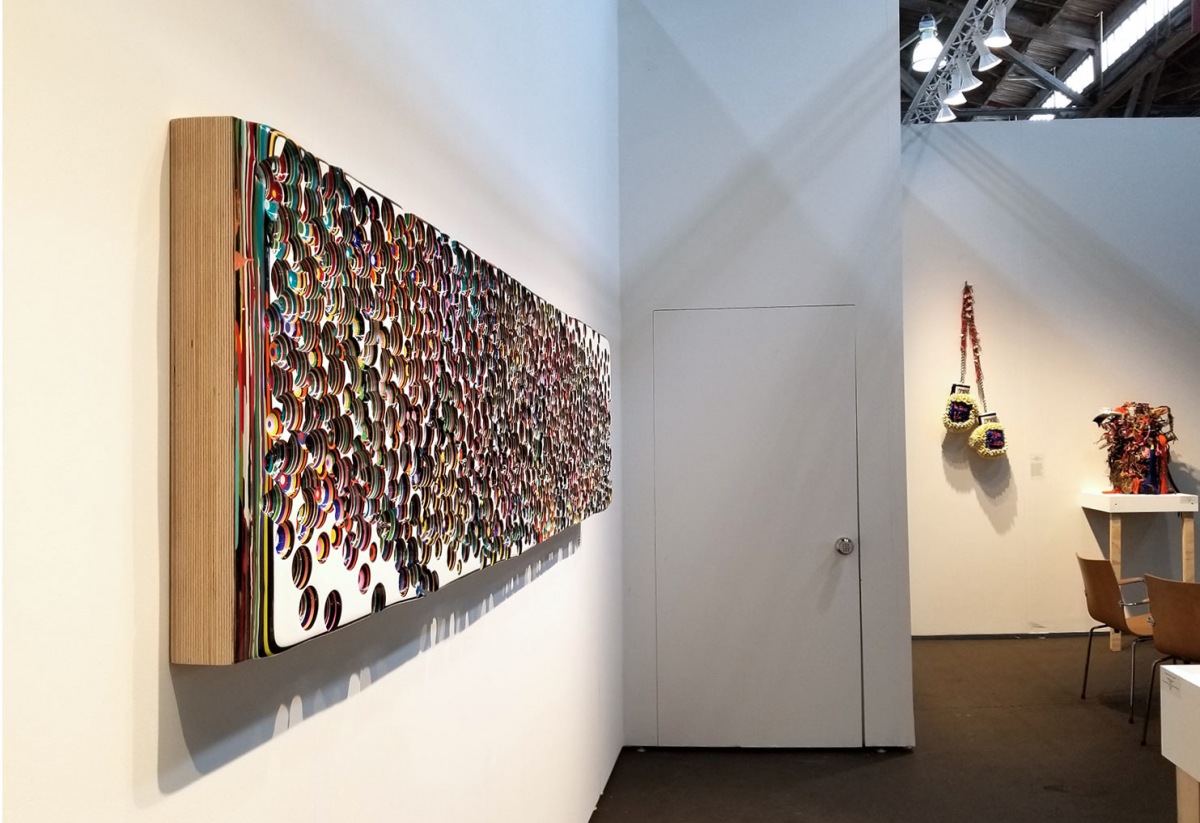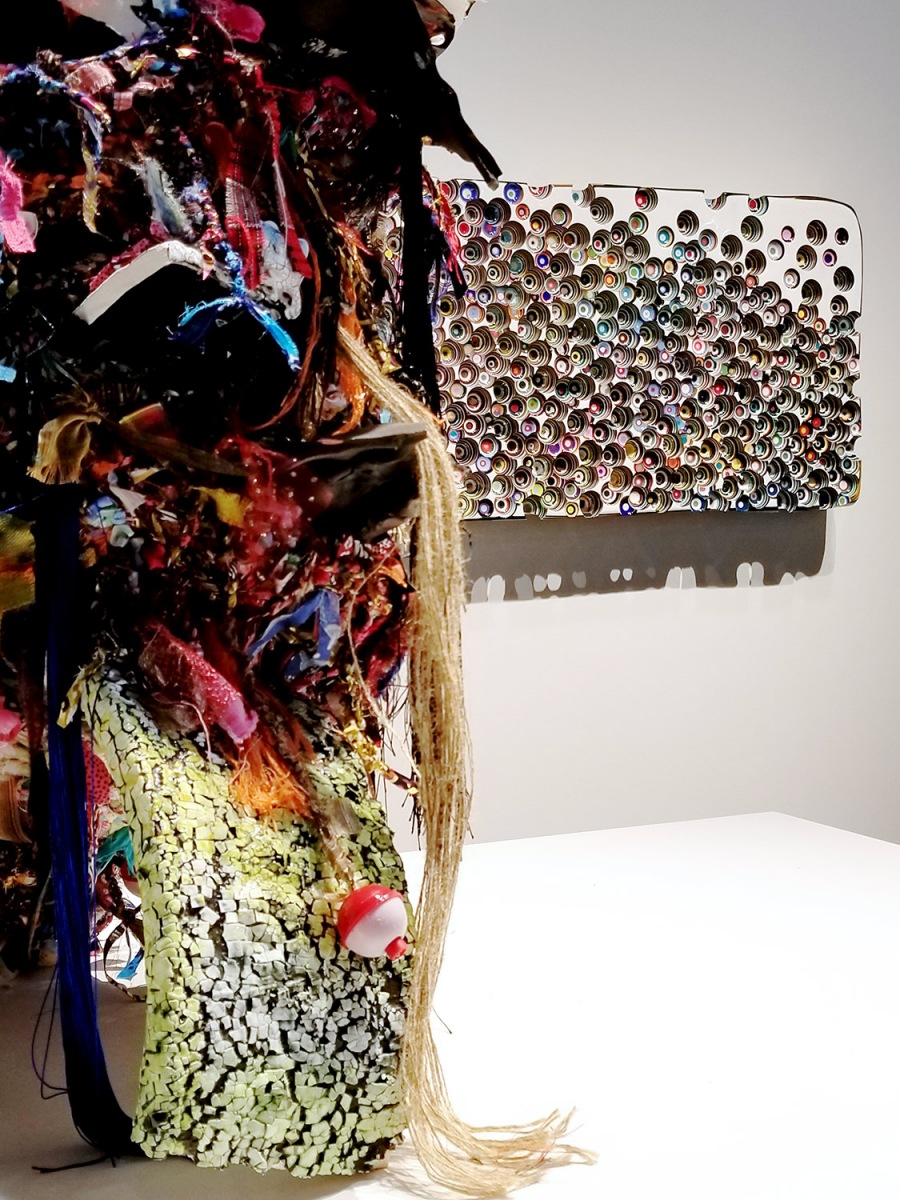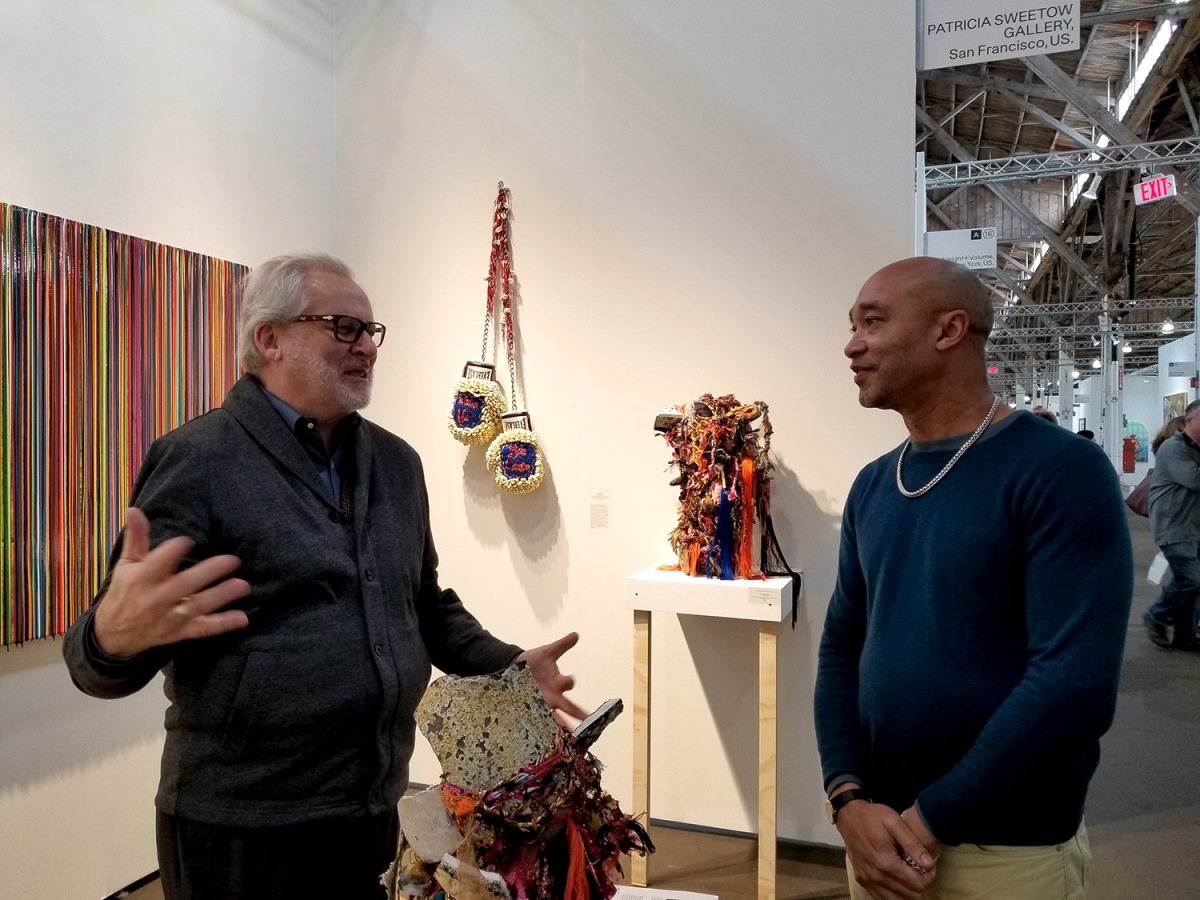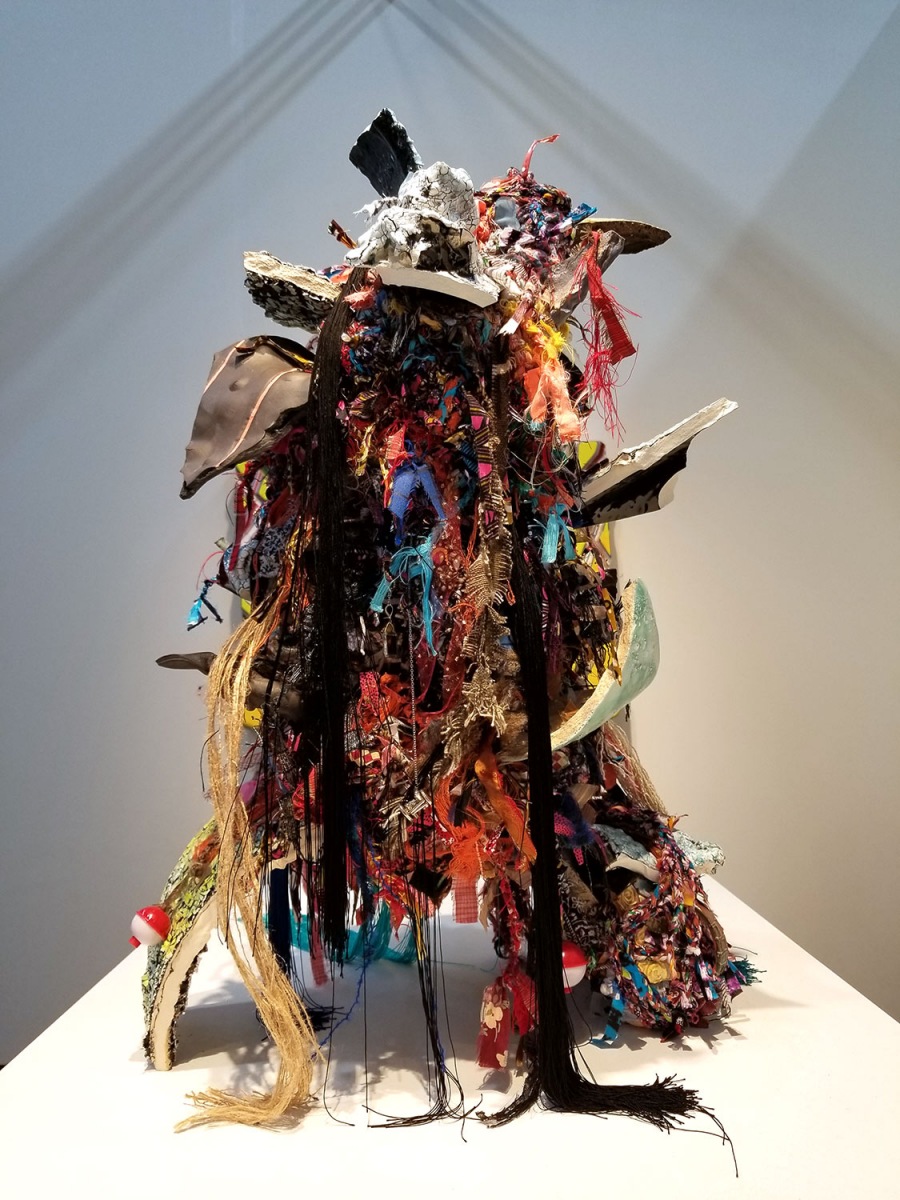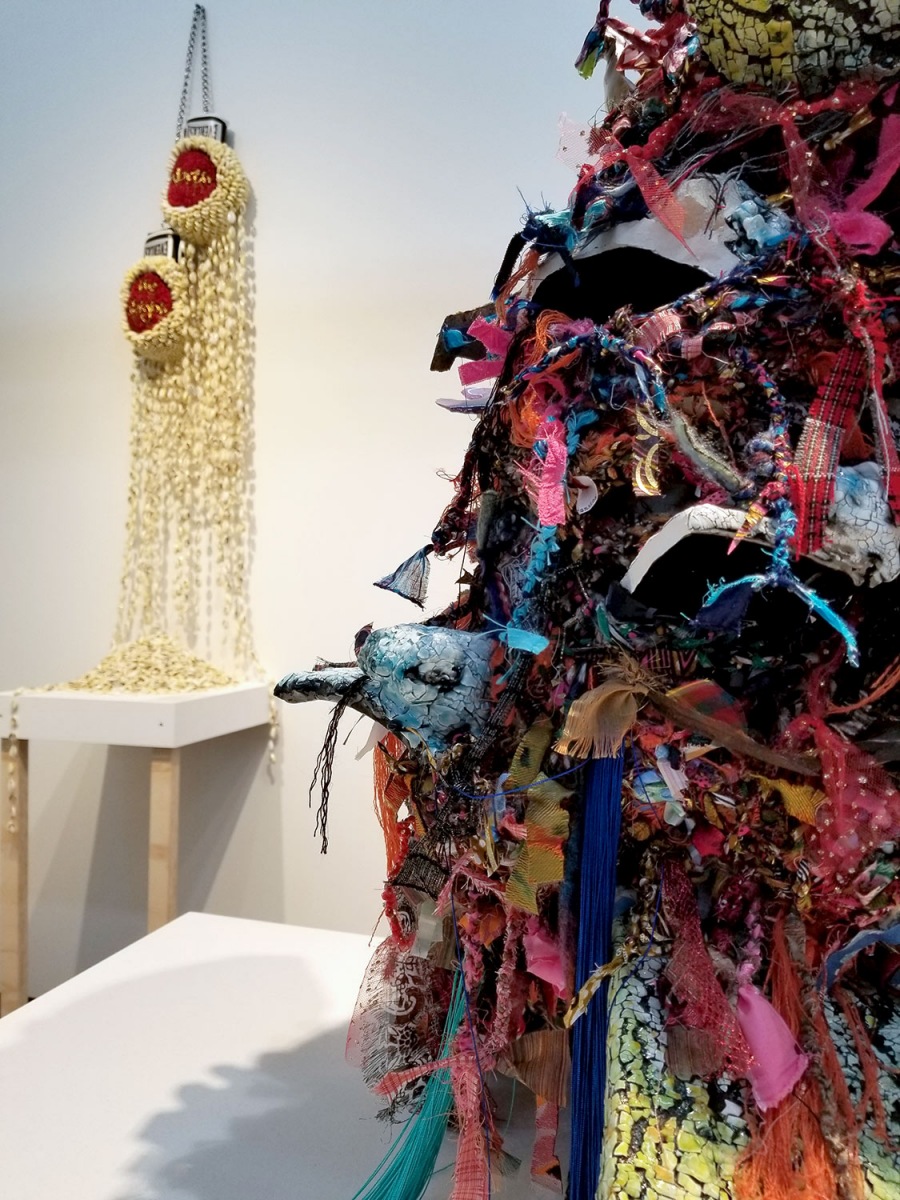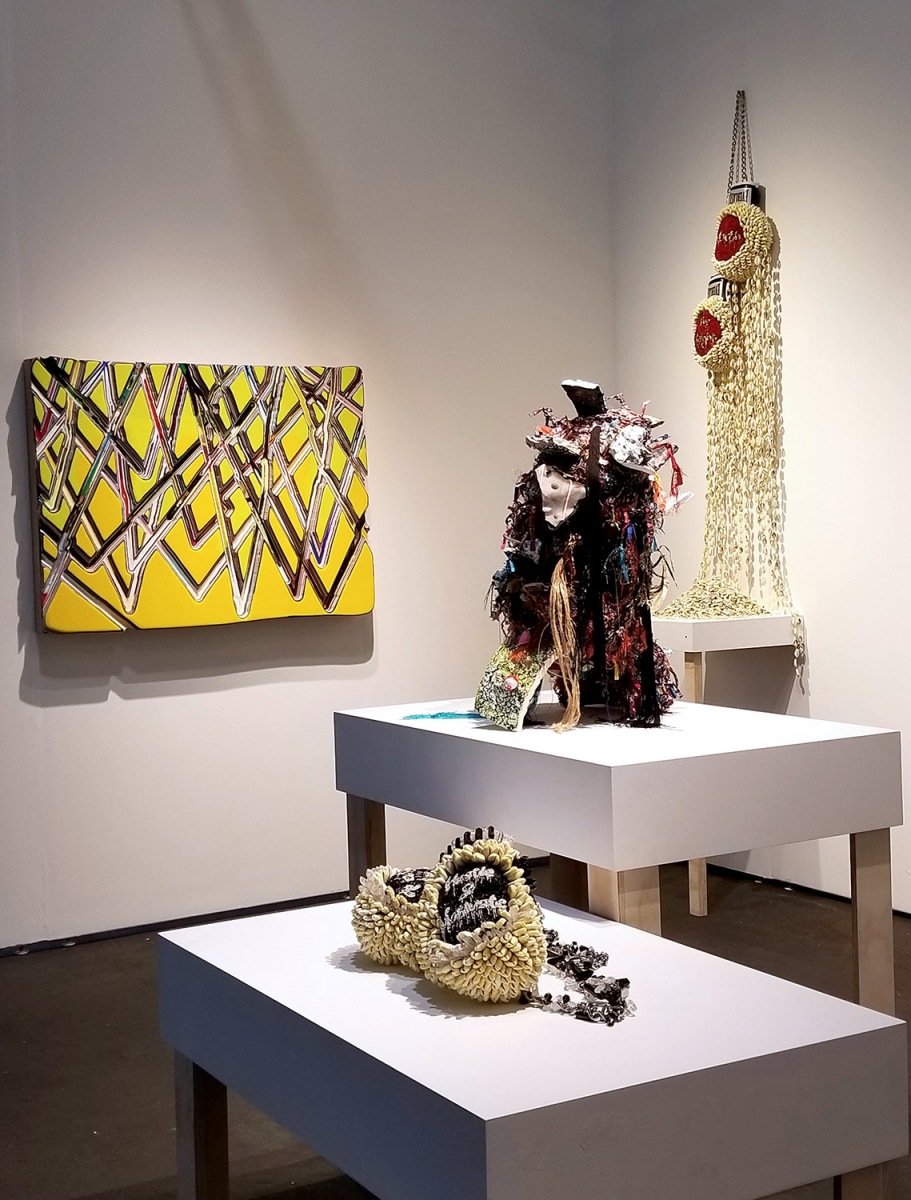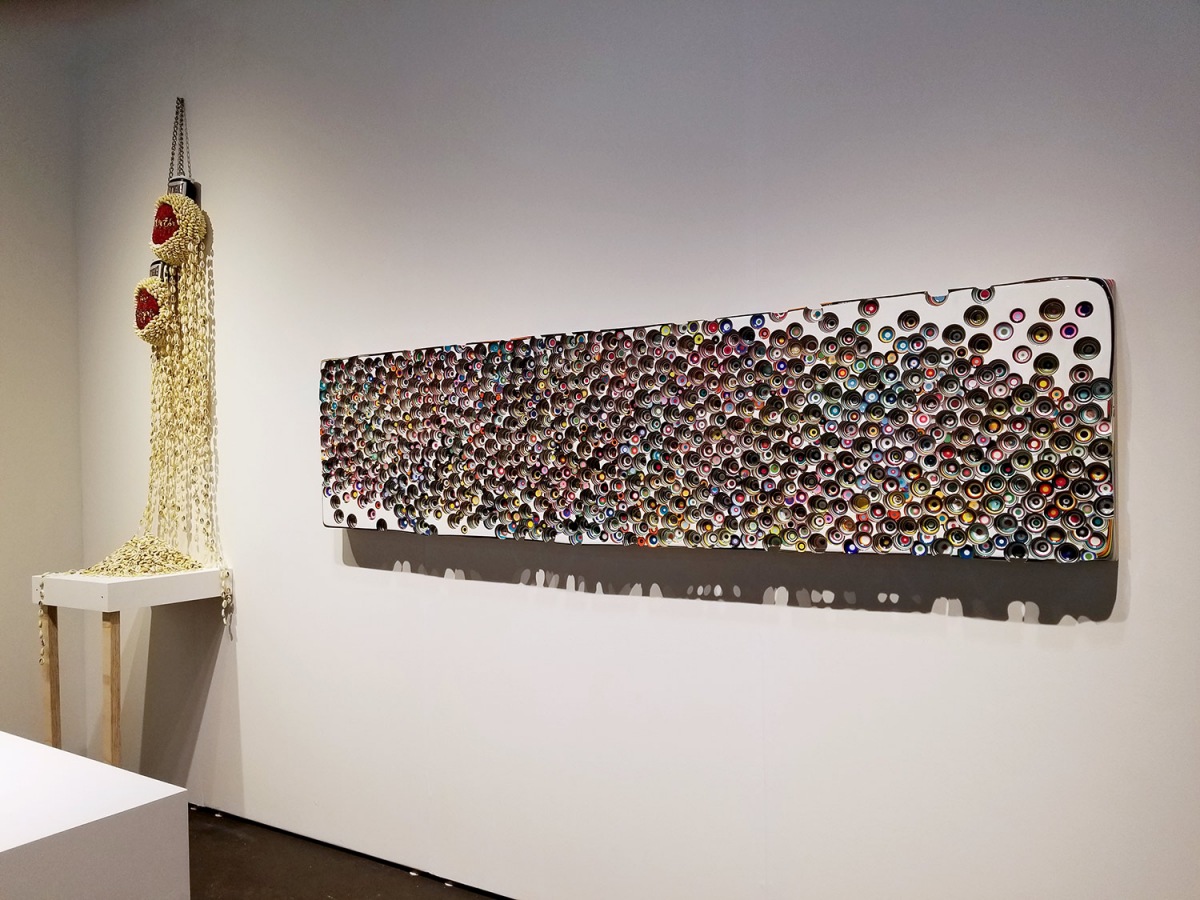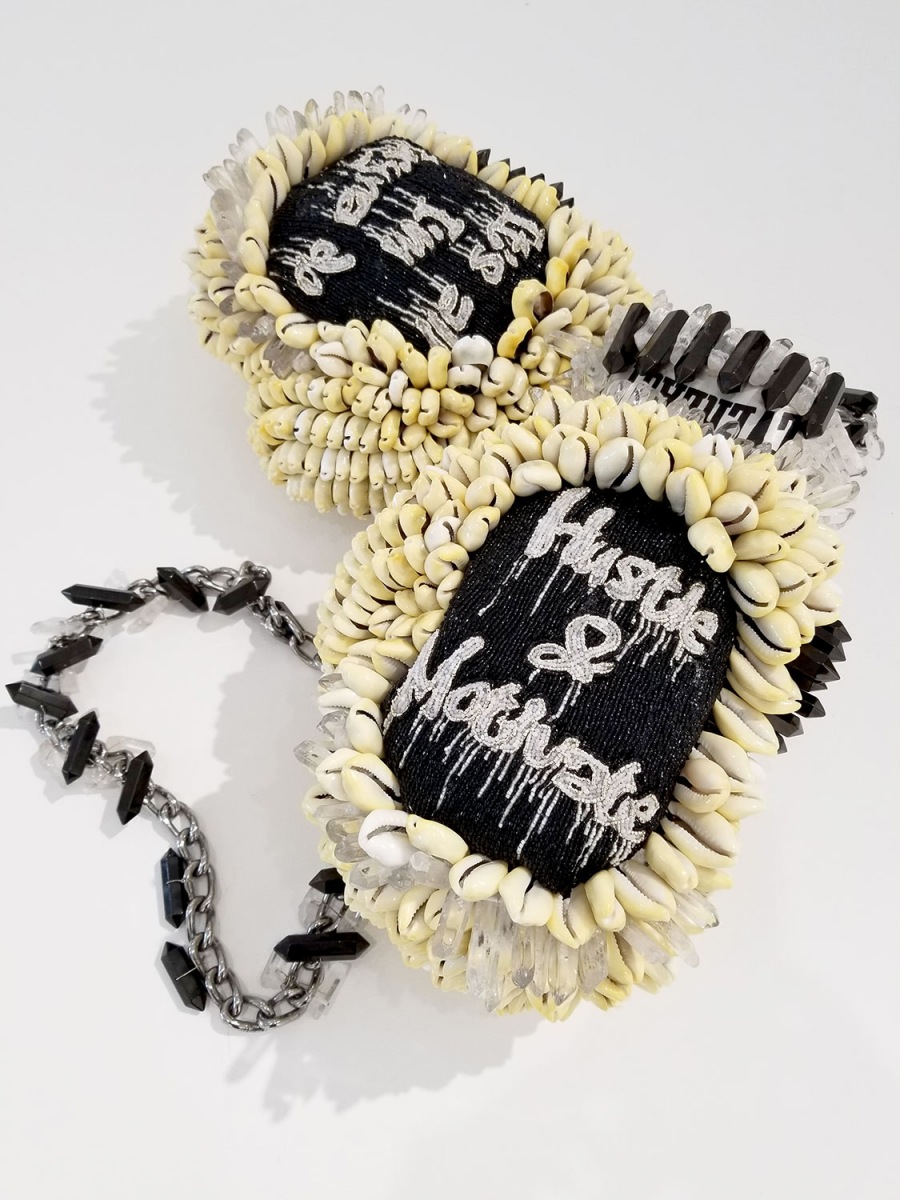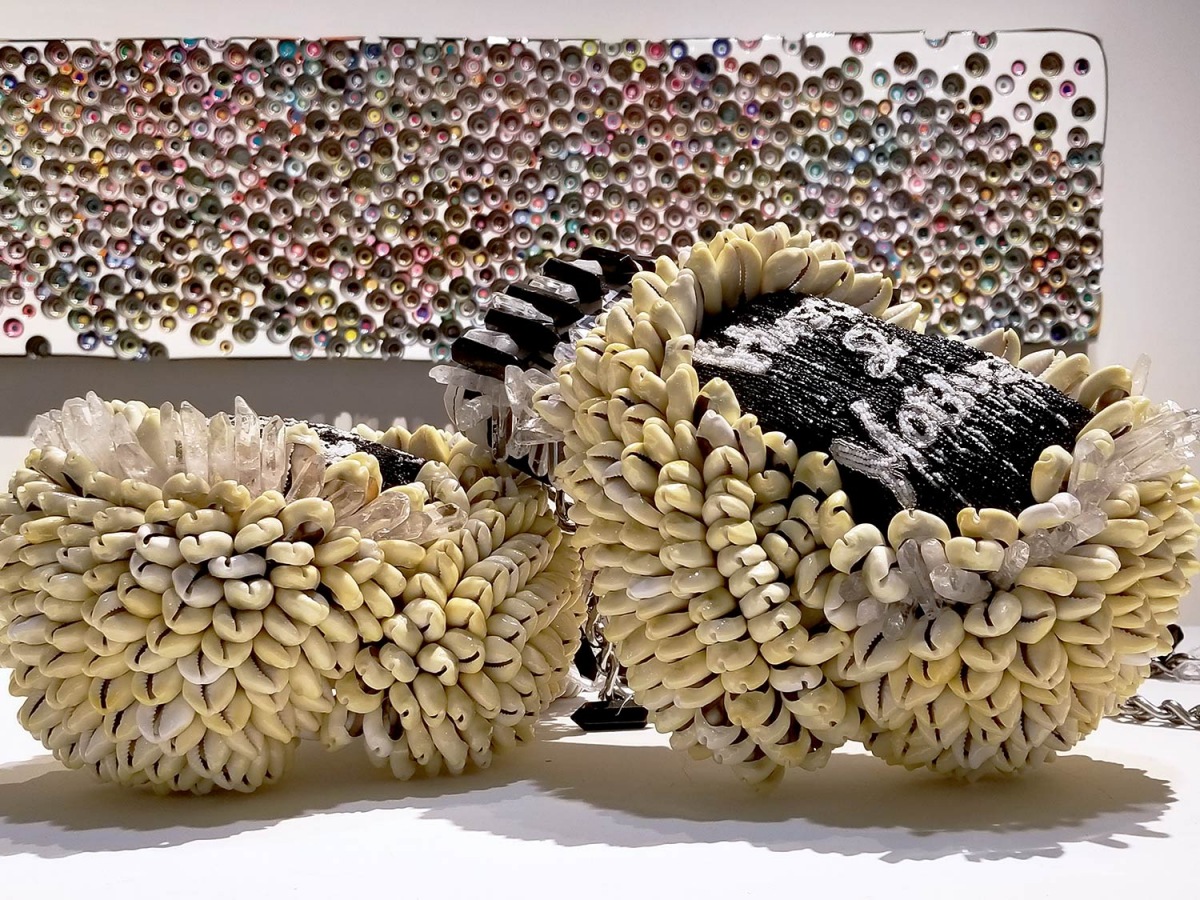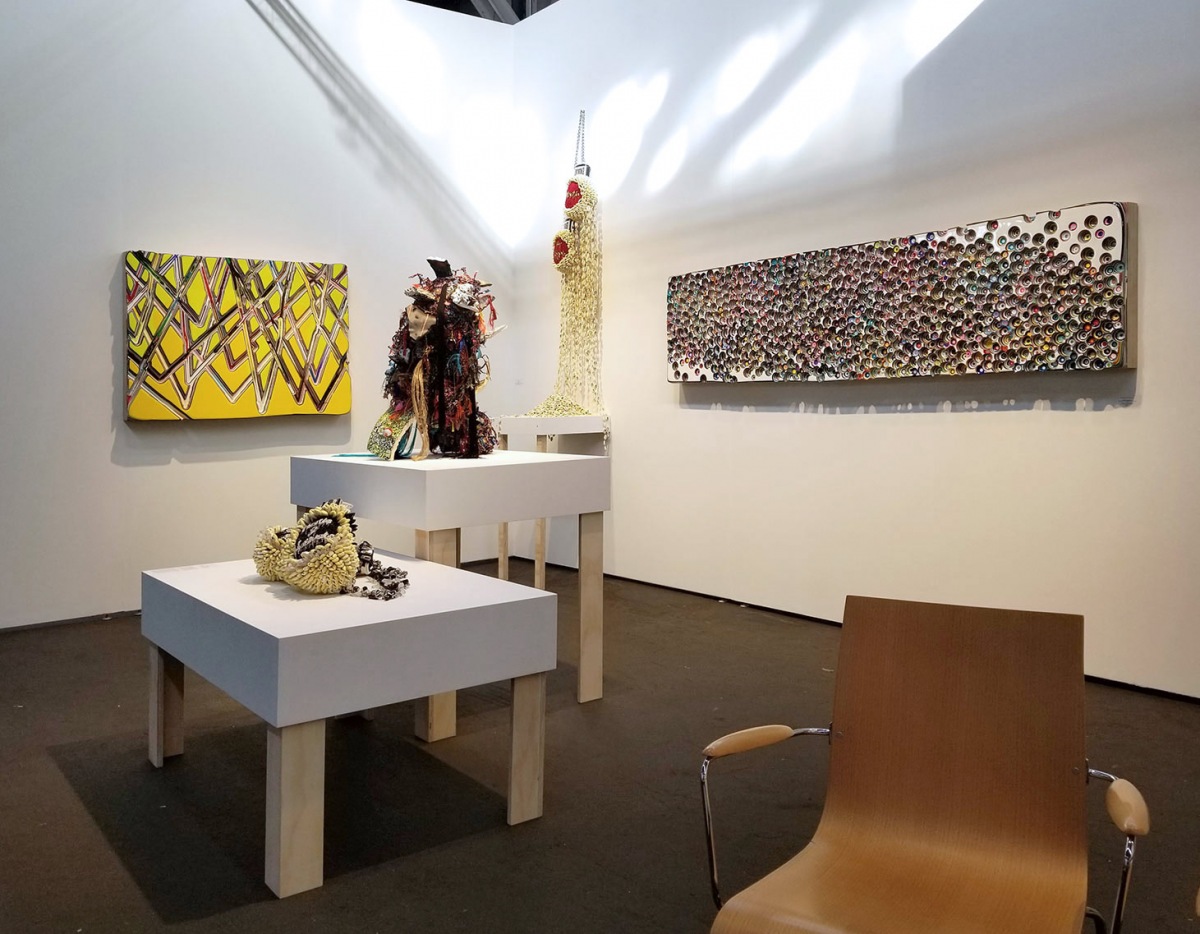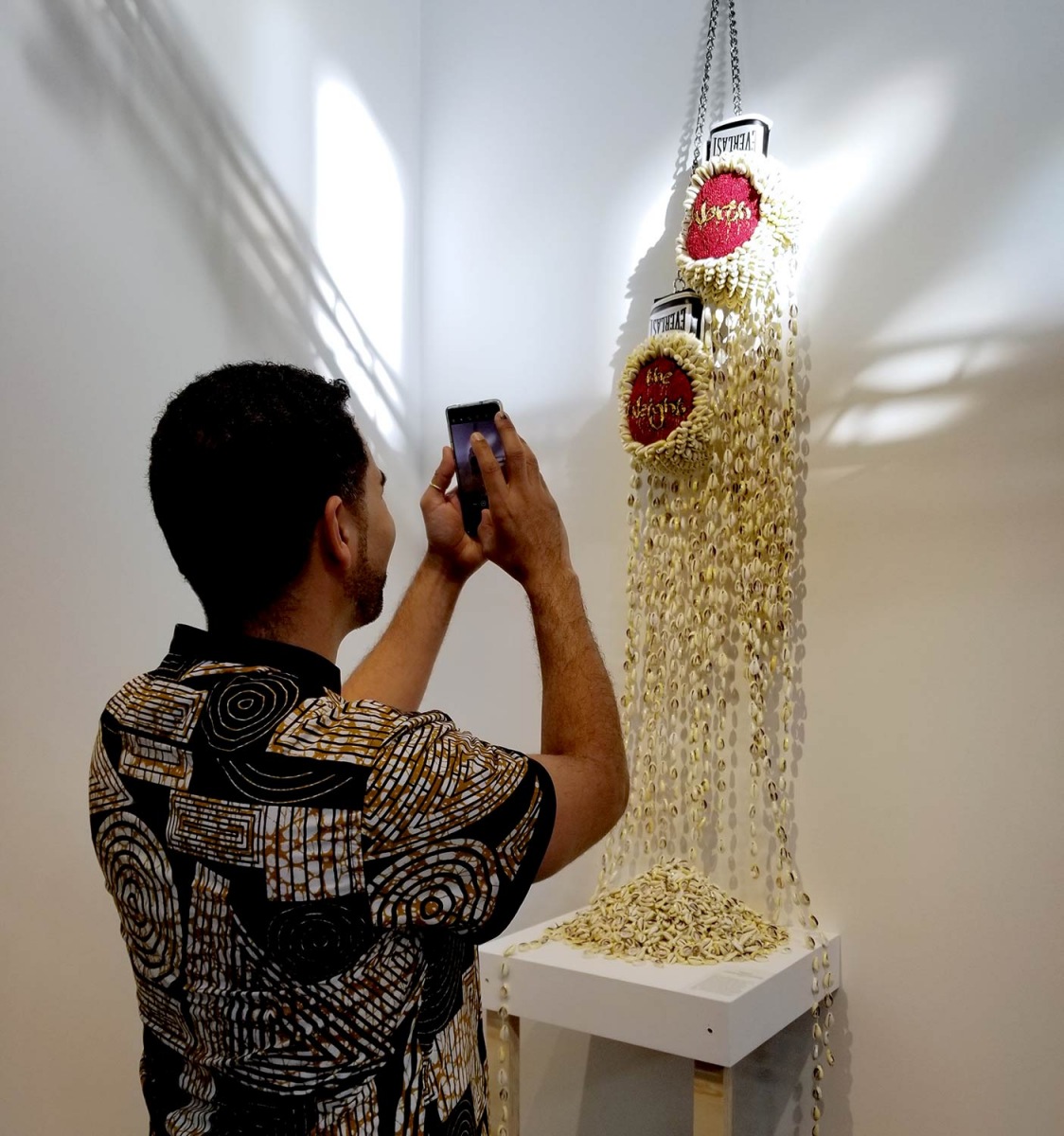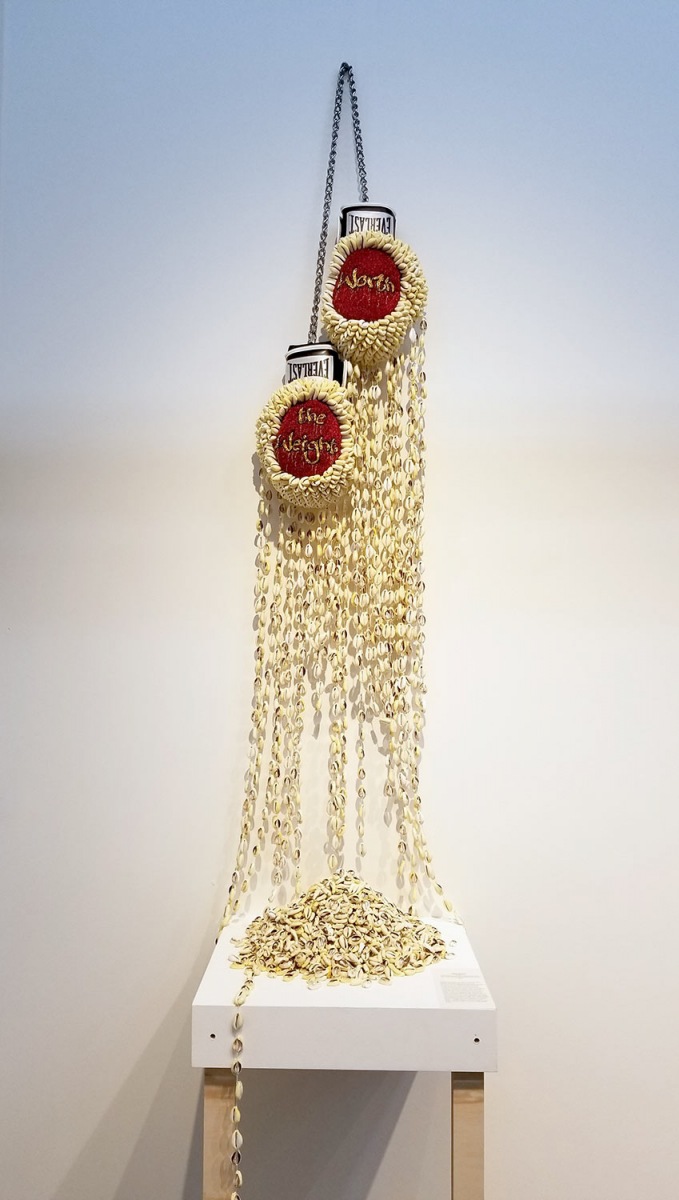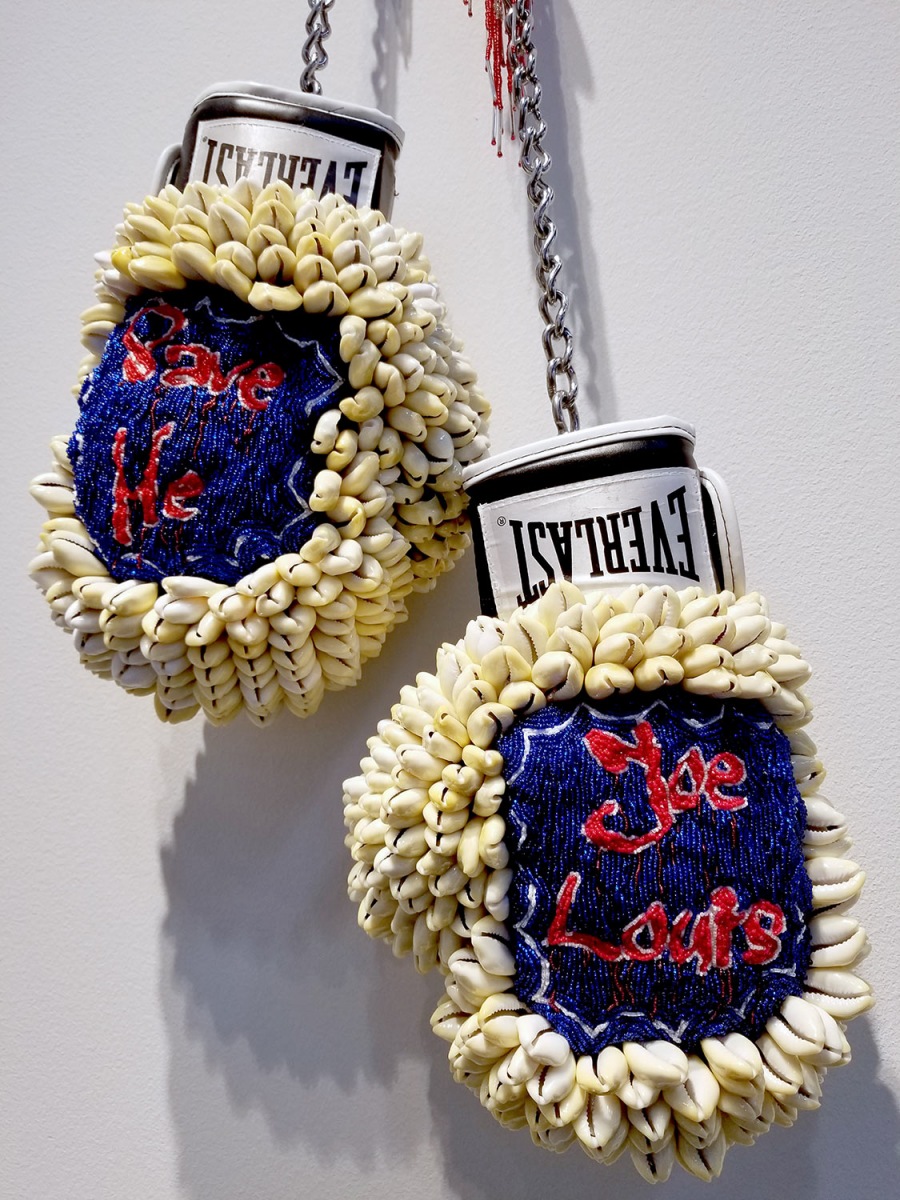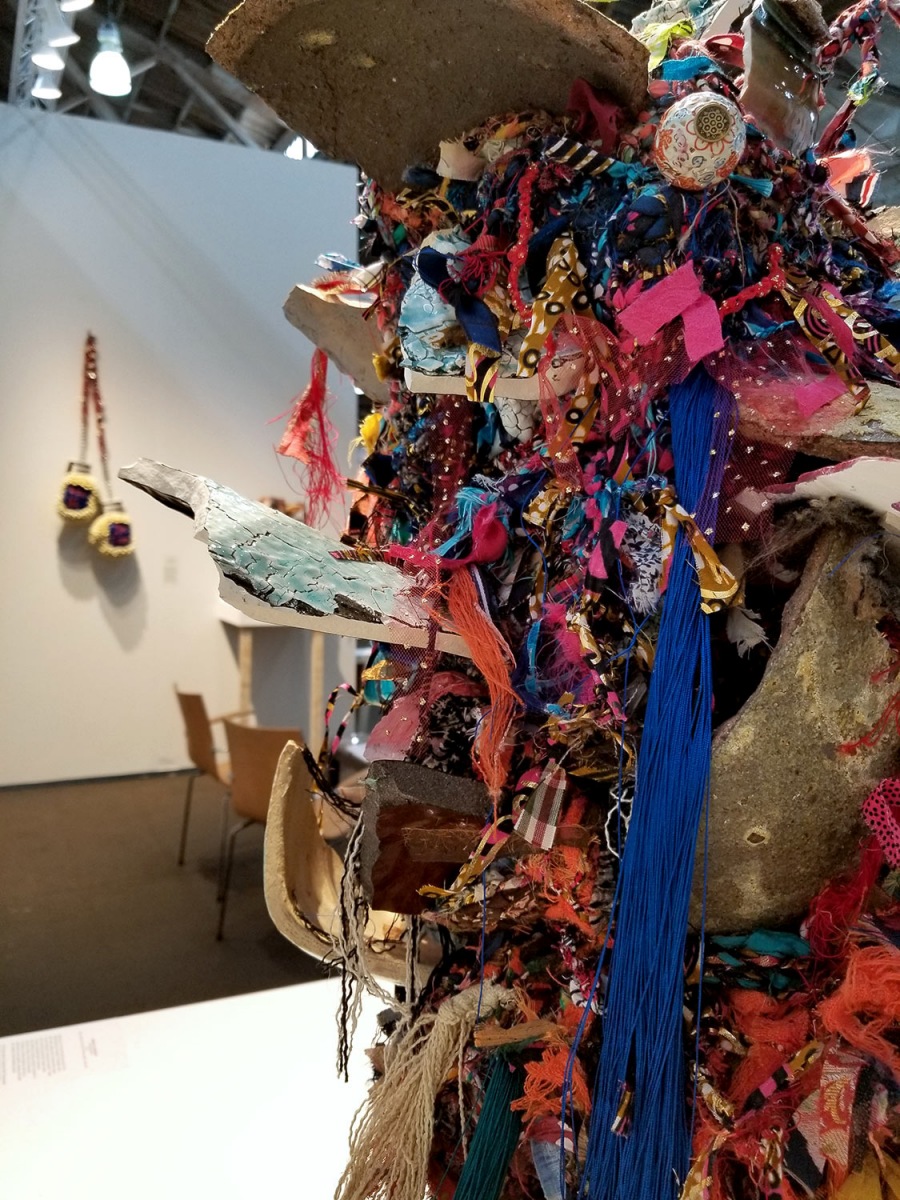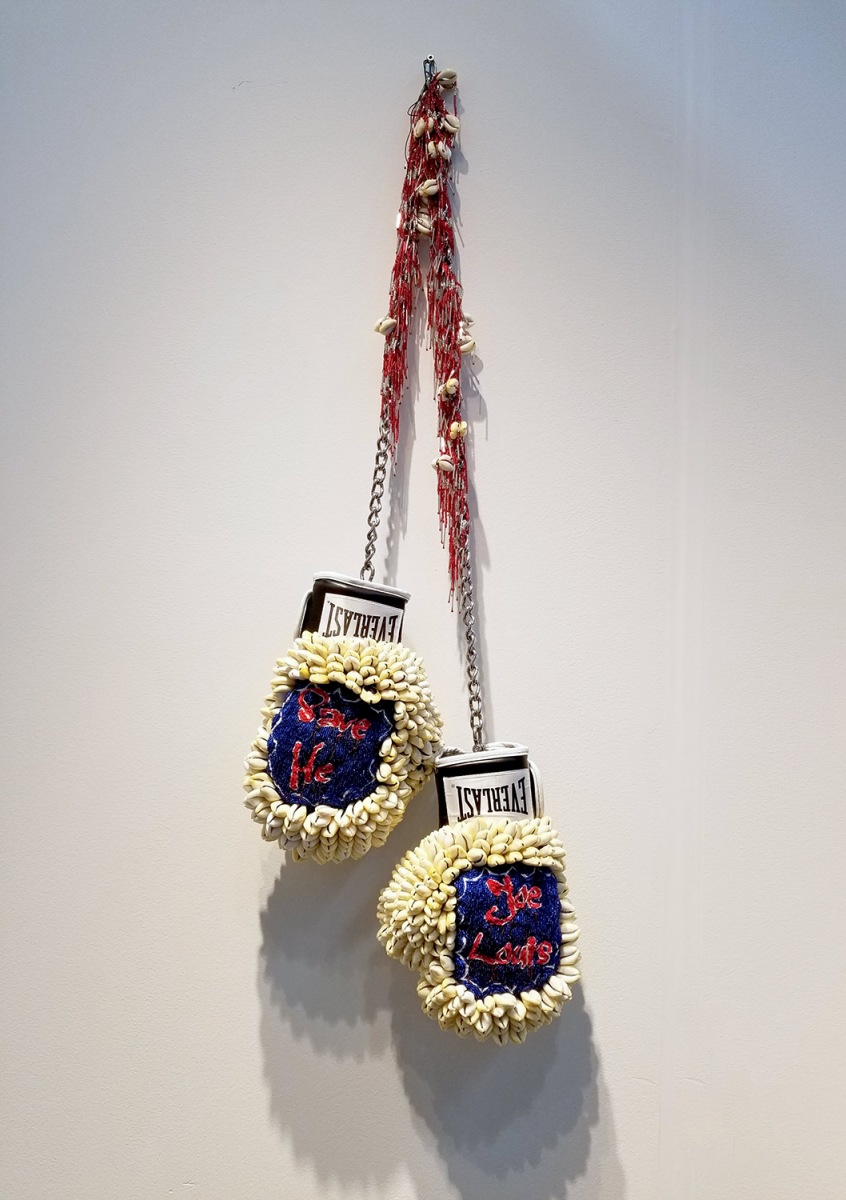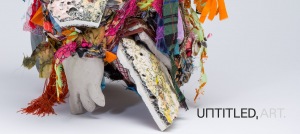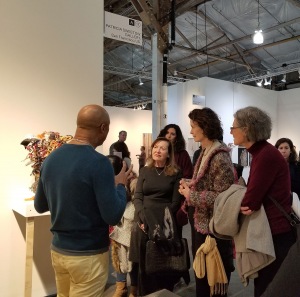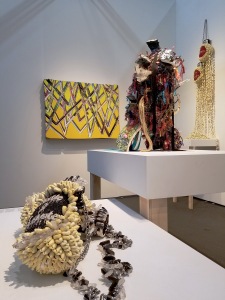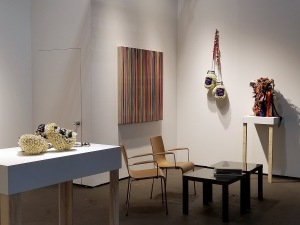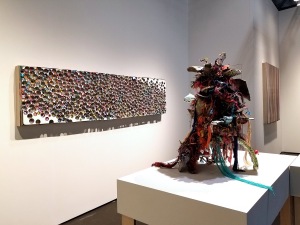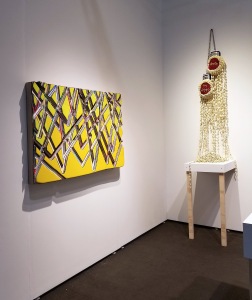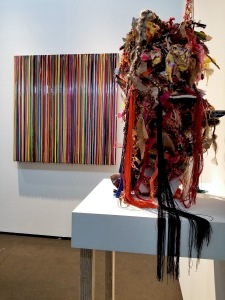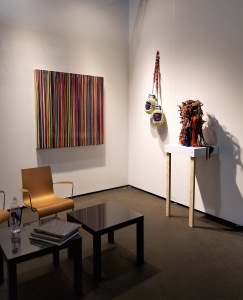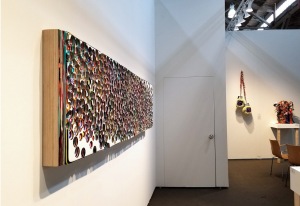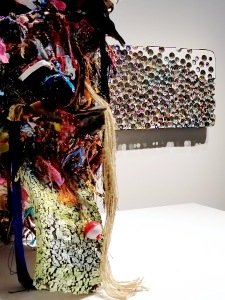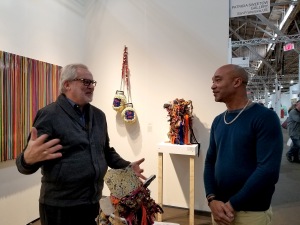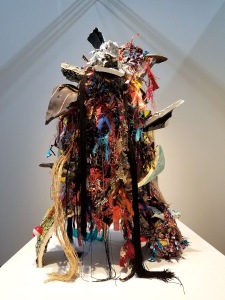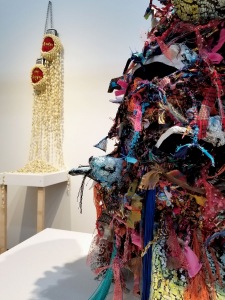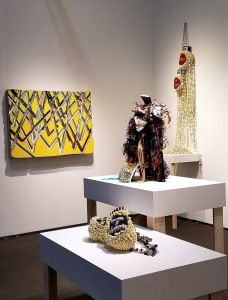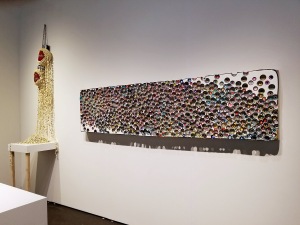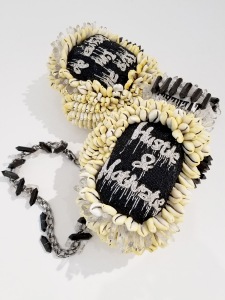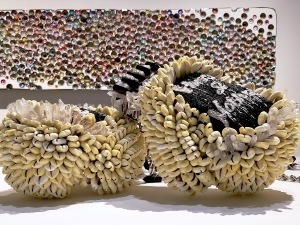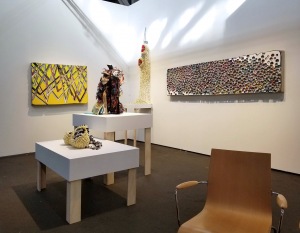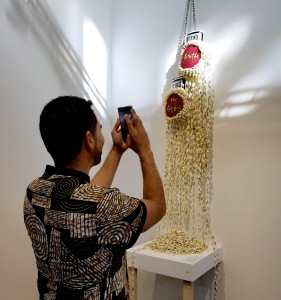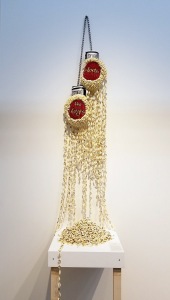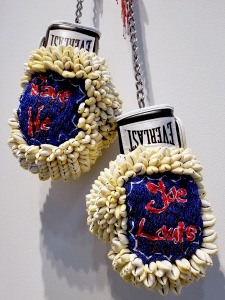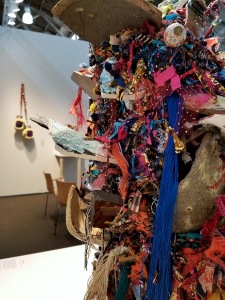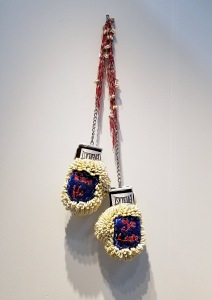Work
Press Release
Hot off the Press!! Brian Boucher, Writer-in-Residence for Untitled Art, SF, interviews Ramekon O’Arwisters
Exhibition Dates: January 17 – 19, 2020
UNTITLED SF: Demetri Broxton | Markus Linnenbrink | Ramekon O’Arwisters
Location:
Pier 35, 1454 The Embarcadero
Hours:
VIP & Press Preview: Thursday, January 16, 2pm–8pm
Friday: January 17, 12pm – 8pm
Saturday: January 18, 12pm – 6pm
Sunday: January 19, 12pm – 6pm
Ramekon O’Arwisters’ new series of sculpture, Cheesecake, have transformed from something broken, needing mending, to fully determined and self-aware. Being Black and Queer, the full complexity of the moniker Cheesecake, used to objectify an attractive, sexualized man or woman is not lost to O’Arwisters. Instead he embraces it, subverting the demeaning implication in describing his said, “objects”. Combining lacy, embellished fabrics with ceramics contributed by students and faculty from California State University at Long Beach, O’Arwisters sculptural hybrids embody both danger and seduction in his bold ‘coming of age’ works.
Born in Kernersville, North Carolina, O’Arwisters earned a M.Div. from Duke University Divinity School in 1986. He was an artist-in-residence at the de Young Museum, the Djerassi Resident Artists Program, and the Vermont Studio Center. Grants and Awards include Artadia: The Fund for Art and Dialogue, NY, the San Francisco Foundation and the San Francisco Arts Commission Cultural Equity Program. He received the 2014 Eureka Fellow, awarded by the Fleishhacker Foundation in San Francisco. His work has been featured in the LA Times, San Francisco Chronicle, 7×7 Magazine, Artnet, and the San Francisco Examiner. Ramekon O’Arwisters is the founder of Crochet Jam, a community arts project infused with folk-art traditions that foster a creative culture in cooperative relationships.
Demeti Broxton’s textile sculptures reflect his connection to the sacred art of the Yoruba people of Nigeria, the beading traditions of the New Orleans Mardi Gras Indians, and his love of hip hop and graffiti. He understands his work as an ongoing investigation of cultural continuities from Africa to America and is particularly interested in how these ancient cultural forms find their way into mainstream culture. Thus, elements of Nigerian royal regalia, sports equipment with significant ties to African American history, Southern voodoo/hoodoo traditions, and quotes from hip-hop artists are seamlessly blended with beaded patchwork employing the same techniques used by the New Orleans Mardi Gras Indians.
Boxing gloves, hand-embroidered with beads, using a backstitch, an adaptation of Yoruba beading traditions and Native American beading techniques will be on view. Woven in are also objects of power and protection, such as High John the Conqueror root, a staple in American Hoodoo traditions and other hidden talismans. Broxton’s work connects contemporary hip-hop artists to the tradition of the Oba, where lyrical quotes and personas embody superhuman power and even some, like Pusha T, who call themselves gods.
In the Yoruba and New Orleans tradition, men are the creators of beaded regalia; however, this is not the case in mainstream American culture where beading and weaving techniques are often seen as women’s work. Broxton’s mash up of bead weaving, which quotes hypermasculine phrases from hip-hop songs, creates an intentional tension and contrast between delicate and powerful, beautiful and dark, masculine and feminine. The use of cowrie shells adds an additional layer of complexity to the underlying ideas in Broxton’s work. Cowrie shell sculptures in the Yoruba tradition are called Ilé Ori or House of the Head Shrines. Ilé Ori are shrines to a person’s spiritual essence; protected by a shield of cowrie shells. During the height of the Transatlantic Slave Trade, human beings were purchased with cowrie shells brought by Portuguese slave ships. In some cases, owning an Ilé Ori could protect a wealthy Yoruba person from being sold into slavery. This juxtaposition of beauty, pain, power, and influence can be seen throughout Broxton’s series; as the shells in Broxton’s artwork represent the violence and wealth of the slave trading economy – a heritage that continues in sports and hip-hop lyrics.
Demetri Broxton is a mixed media artist of Louisiana Creole and Filipino heritage. He was born and raised in Oakland, CA and earned a BFA with an emphasis in oil painting at UC Berkeley in 2002. Demetri is influenced by craft and folk traditions and is passionate about infusing these traditions into fine art.
Markus Linnenbrink’s paintings are described as both performative and extreme. Linnenbrink pours and pools resin with cumulative layers of opaque and translucent pigments, building the dramatic physicality of his objects. Using a medium with short-lived malleability, his early epoxy paintings relied on the interplay between liquidity and gravitational pull; while later surface derivations were devised with mechanical assistance, forming concentric depressions, then incised channels. Linnenbrink’s creative vocabulary was described by David Pagel, art critic for the Los Angeles Times, in an essay, Gestural Abstraction in the Information Age: “Linnenbrink paints himself out of the picture. His paintings fly in the face of the idea that art is all about self-expression… Hands-off detachment, unsentimental experimentation, and quasi-scientific exploration play potent roles in his complex compositions, whose surfaces take painting to extremes, both sculpturally and coloristically.”
Markus Linnenbrink garnered attention in the U.S. and Europe with wall paintings at the UCLA Hammer Museum, the Aldrich Contemporary Art Museum, the Kunstmuseum in Bonn, and Museum Haus Esters, Krefeld. Recent significant commissions are 75 Rockefeller Center, New York with a 7-by-90-foot painting installed in their public concourse lobby; and Morrison & Foerster, New York installation of eight, 9-by-42 foot wall paintings, one on each of their eight floors; and Jorge M. Pérez SLS Brickell 40,000 sq. ft. wall painting, Miami, Florida. Over 50 works are in public collections, which include the San Francisco Museum of Modern Art; UCLA Hammer Museum; The Hague Ministry of Education, Culture and Science, the Netherlands; Neue Galerie, Kassel; Pennsylvania Academy of Fine Arts, Philadelphia; Museum Katharinenhof, Kranenburg; Kunsthalle Recklinghausen; Herzliya Museum of Contemporary Art, Israel; Clemens Sels Museum, Neuss; and 75 Rockefeller Center, NY.
